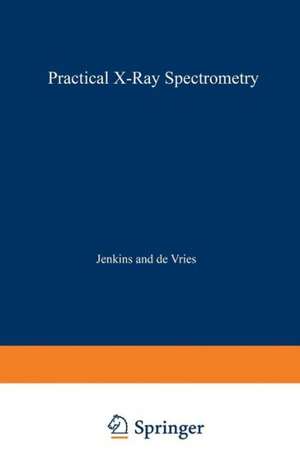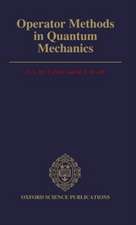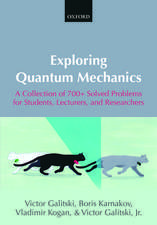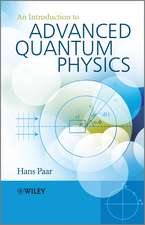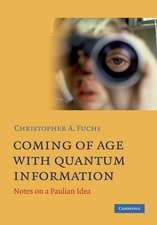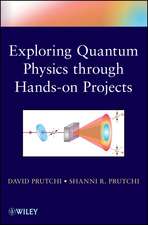Practical X-Ray Spectrometry
Autor JENKINSen Limba Engleză Paperback – 12 iun 2012
Preț: 380.84 lei
Nou
Puncte Express: 571
Preț estimativ în valută:
72.90€ • 79.21$ • 61.27£
72.90€ • 79.21$ • 61.27£
Carte tipărită la comandă
Livrare economică 21 aprilie-05 mai
Preluare comenzi: 021 569.72.76
Specificații
ISBN-13: 9781468462845
ISBN-10: 1468462849
Pagini: 208
Ilustrații: X, 190 p.
Dimensiuni: 140 x 216 x 11 mm
Greutate: 0.25 kg
Ediția:1969
Editura: Springer
Colecția Springer
Locul publicării:New York, NY, United States
ISBN-10: 1468462849
Pagini: 208
Ilustrații: X, 190 p.
Dimensiuni: 140 x 216 x 11 mm
Greutate: 0.25 kg
Ediția:1969
Editura: Springer
Colecția Springer
Locul publicării:New York, NY, United States
Public țintă
ResearchCuprins
1: Physics of X-Rays.- 1.1 Origin of X-rays.- 1.2 Production of X-rays.- 1.3 Properties of X-rays.- 1.4 Excitation of fluorescence radiation in the sample.- 2: Dispersion.- 2.1 General.- 2.2 Geometric arrangement of the spectrometer.- 2.3 Effective range of the spectrometer.- 2.4 Dispersion efficiency.- 2.5 Broadening of line profile.- 2.6 Collimation requirements of the spectrometer.- 2.7 Reflection efficiency.- 2.8 Filters to increase resolving power.- 2.9 Problems experienced in the application of crystal dispersion.- 2.10 Dispersion of soft X-rays.- 2.11 Comparison of the methods for long wavelength dispersion.- 3: Detection.- 3.1 General.- 3.2 Gas filled detectors.- 3.3 The scintillation counter.- 3.4 Comparison of detectors.- 4: Pulse Height Selection.- 4.1 Principle of pulse height selection.- 4.2 Automatic pulse height selection.- 4.3 Applications of pulse height selection.- 4.4 Theoretical application of pulse height selection.- 4.5 Practical problems arising in pulse height selection.- 4.6 Pulse amplitude shifts.- 4.7 Pulse amplitude distortions.- 5: Counting Statistics.- 5.1 introduction.- 5.2 Definition of statistical terms.- 5.3 Random distribution of X-rays.- 5.4 Choice of fixed time or fixed count.- 5.5 Limit of counting error.- 5.6 Counting error in the net intensity.- 5.7 Selection of optimum counting times.- 5.8 Selection of best conditions for analysis.- 5.9 Selection of best conditions for low concentrations.- 5.10 Errors in using the ratio method.- 5.11 Selection of ratio or absolute counting method.- 5.12 Counting error versus stability.- 5.13 Counting error as a function of total numbers of counts.- 6: Matrix Effects.- 6.1 Errors in X-ray analysis..- 6.2 Elemental interactions.- 6.3 Physical effects ..- 7: Quantitative Analysis.- 7.1 General.- 7.2Use of standards.- 7.3 Dilution techniques.- 7.4 Thin film techniques.- 7.5 Mathematical corrections.- 8: Sample Preparation.- 8.1 General.- 8.2 Samples requiring only a simple treatment.- 8.3 Samples requiring significant pre-trcatment.- 8.4 Samples requiring special handling treatment.- 9: Trace Analysis.- 9.1 General.- 9.2 Analysis of low concentrations.- 9.3 Theoretical considerations.- 9.4 Statistical definition.- 9.5 Figure of merit (or quality function).- 9.6 Generator stability.- 9.7 Effect of long term drift.- 9.8 Variation of detection limit with atomic number.- 9.9 Choice of excitation conditions.- 9.10 Effect of background.- 9.11 Removal of background by polarization.- 9.12 Use of filters.- 9.13 Effect of the matrix.- 9.14 Analysis of limited quantities of material.- 9.15 Theoretical considerations I.- 9.16 Ultimate requirements in sample size.- 9.17 Handling of small samples.- Appendix 1(a).- Appendix 2(a).- Appendix 2(b).- Appendix 3(a).- Appendix 3(b).- Appendix 4.
